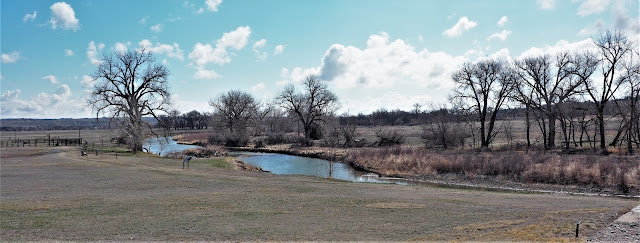This grand old two-story souvenir of the American west was and still is called "Old Bedlam," because the bachelor officers who made their beds there, some historians suggest, did some serious carousing out on the frontier, where day-to-day life was never as wild as it is in Western movies. Biblically speaking the troops gave themselves over to all kinds of drunken rowdiness; thus, the place has been "Old Bedlam" forever after.
In the remodeled front bedroom a volley of signatures are scratched onto the wall above the fireplace, as they likely were 150-plus years ago.
The name at the very top is recognizable, if you know Western history. Let me bring it up closer.
That helps. "John L. Grattan, Bvt 2nd Lt 6th Infy," I think. After graduating from West Point, Grattan got himself assigned here, to Ft. Laramie, along the North Platte and Laramie rivers, a place, a kind of citadel ever since days of the fur trappers and their annual summer rendezvous.
Brevet Lt. Grattan went out on a patrol in August of 1854 and encountered some real trouble communicating with Conquering Bear, a Lakota headman, and his warriors, of whom there were many, more than a thousand. A cow that belonged to a Mormon emigrant wandered off from a campground to a place where an Lakota kid named High Forehead shot the poor beast, then called his friends over for a feast.
The Mormon on his way to Zion didn't take kindly to his own cow being served up as the entree of some Indian gala. To him, that animal was pure loss, so the weary traveler complained bitterly and publicly. Grattan, who'd never had an encounter with Indians, got the assignment of picking up High Forehead and trucking him back to the fort. He must have smiled greatly. He'd been known to utter more than a few brash words about how much he was looking forward to licking redskins.
When he and the men he'd taken with got to the Lakota encampment, you might think his fever would have grown a bit cold. At least it should have, more than it apparently and reportedly did. As many as 4000 Lakota were camped out, and there were hungry warriors all over, more than a little ready to fight.
Tensions rose, tempers flared, things just got out of hand and blew up, and Brevet Lieutenant John L. Grattan never returned to Old Bedlam. For Grattan and 28 others under his command, that August day was the end of the trail. Not one of them returned. When, four days later, the Lakota long gone, a burial party went out, they identified Grattan only by his watch.
By treaty, enforcing the law among the Ogallalas wasn't the army's job. That job belonged to the agent. From the day he arrived at Laramie, Grattan had been spouting off about how much he relished a good fight with the bad guys, the Injuns. Historians might quibble, but these days, so many years later, it's seem pretty easy to think of Brevet Second Lieutenant John L. Grattan as the wild west's first rogue cop.
He got it. He certainly did.
Fourteen years later, right about here, across the Fort's grounds, on the other side of the Laramie River, hundreds of Cheyenne and Lakota met with big wigs from the Great Father in Washington to work out the terms of yet another treaty. When deliberations ended, dozens of Lakota and Cheyenne had signed, promising to stay out of the way of the wagon trains, the mad gold rush, and all those who'd created crowds every summer, the likes of which no one had ever seen. In return for letting them pass, the Lakota people would retain rights to their land, the western half of South Dakota, and the sacred Paha Sapa or Black Hills, theirs until the rivers run dry. . .and all of that. That was the Treaty of 1868.
Six years later, General George Custer grabbed a couple of would-be geologists and sent them hunting for gold in the streams in the neighborhood of the town that today bears his name, Custer, SD. Those two amateurs found a smattering of gold, just enough--which isn't much--to awaken awaken madness in the multitudes who followed up and thereby make the Treaty of 1868 into little more than toilet paper.
So much for that promise too.
Fort Laramie, a grand place, is far off the beaten path. You have to make a point of visiting. If you miss it this summer, you're missing the Grand Central Station of the West, a place for decades the very capital of the west, a place, trust me, where there's just so much to learn.





No comments:
Post a Comment